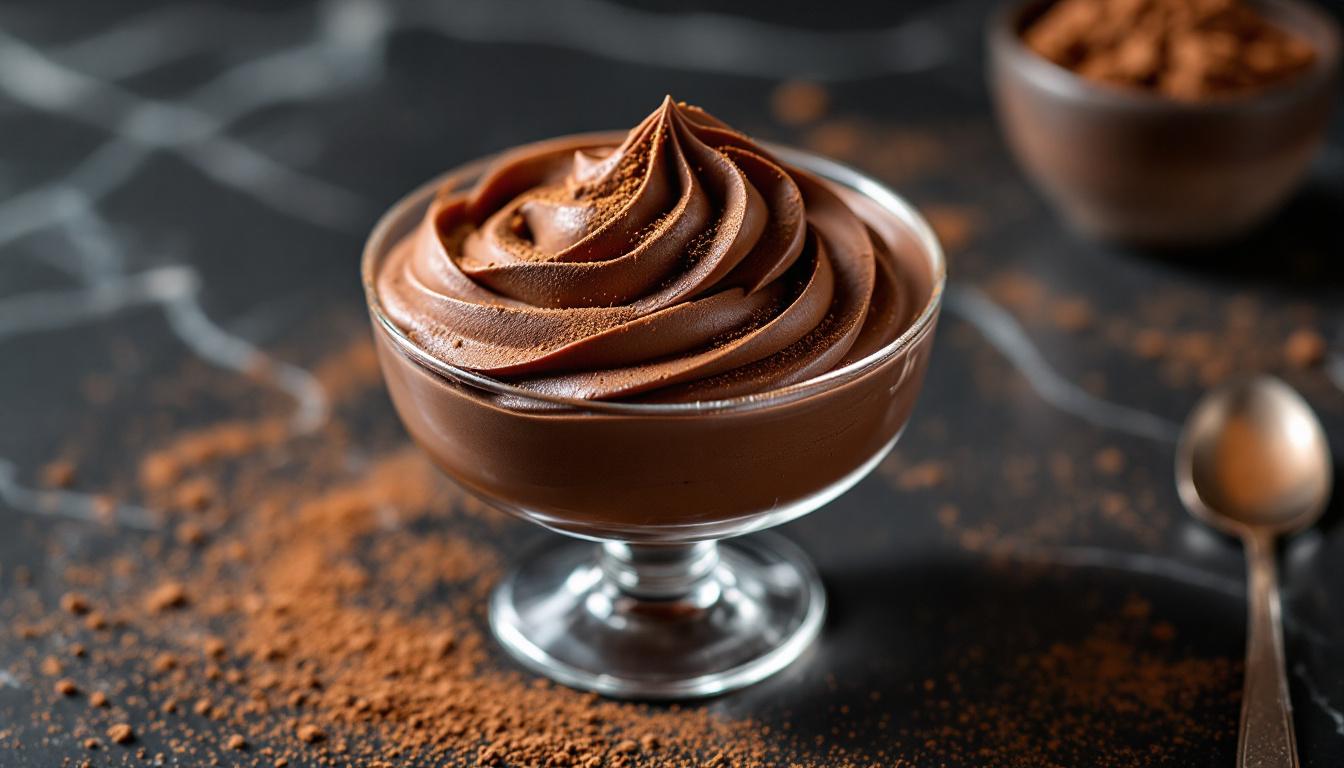The first time I encountered true chocolate mousse in Lyon, I was struck by its deceptive simplicity. Three ingredients transformed into something ethereal through technique alone. What captivated me wasn’t just the intensity of flavor, but the silky texture that seemed to defy physics—substantial yet impossibly light. This classic French dessert taught me that restraint often creates the most profound culinary experiences. The secret? Understanding that chocolate mousse isn’t about adding ingredients—it’s about capturing air.
The Story
Mousse au Chocolat Noir has humble origins in 18th-century French kitchens, where resourceful cooks discovered that incorporating air into chocolate created textural magic. While modern interpretations often add cream for stability, traditional recipes rely solely on chocolate, eggs, and minimal sugar—allowing the chocolate’s complexity to take center stage. During my time working in a Parisian bistro, I watched our 70-year-old pastry chef refuse all shortcuts, insisting that true mousse required nothing but these three ingredients and proper technique.
Ingredients Spotlight
The foundation of exceptional chocolate mousse begins with selecting the right chocolate. Choose a dark variety (70-75% cocoa solids) with balanced bitterness and fruit notes—I prefer single-origin bars from Ecuador or Madagascar for their complex profiles. Four large eggs provide structure through precise separation and manipulation. Just 20g (4 teaspoons) of caster sugar balances the chocolate without overwhelming it. The quality of these three ingredients directly translates to your final result.
For best results, bring eggs to room temperature 30 minutes before beginning, as cold eggs won’t incorporate air efficiently. Having ingredients measured and prepared allows for seamless execution of this technique-driven dessert.
Step-by-Step Guide
1. Finely chop 120g (4.3oz) dark chocolate and place in a heatproof bowl. Set over a saucepan with 1 inch of barely simmering water (ensure bowl doesn’t touch water). Stir occasionally until completely melted (about 3-4 minutes). Remove from heat and cool until just warm to touch (around 115°F/46°C).
2. Separate 4 eggs, placing whites in a clean, dry metal or glass bowl. (Even a trace of fat will prevent proper whipping.) Add yolks to a medium bowl with 2 teaspoons sugar and whisk until pale and ribbon-like (about 2 minutes by hand).
3. Slowly incorporate melted chocolate into yolk mixture, stirring constantly to prevent scrambling. The mixture will thicken considerably—this is normal.
4. Add remaining 2 teaspoons sugar to egg whites and whip to stiff peaks. Test by inverting the bowl—properly whipped whites should stay put.
5. Gently fold one-third of whites into chocolate mixture to lighten it. Then fold in remaining whites in two additions using a large spatula, cutting through center and scooping around edges. Stop the moment streaks disappear.
6. Divide into four serving dishes and refrigerate for minimum 4 hours, preferably overnight.
Expert Techniques
The most critical moment in chocolate mousse preparation is the folding stage. Too aggressive and you’ll deflate the whites; too gentle and you’ll have chocolate streaks. Use a cutting motion through the center, then rotate the bowl quarter-turns as you fold from bottom to top. The mixture should look uniform but still airy.
Chef’s Note: If your chocolate seizes (becomes grainy or stiff), quickly add 1 tablespoon hot water and stir vigorously. This usually rescues it perfectly. I learned this trick after a particularly stressful service when I had to remake desserts for a 12-top with limited time.
For consistent results, maintain chocolate temperature between 110-115°F (43-46°C) when combining with yolks. Too hot destroys enzymes; too cool creates lumps. I use an instant-read thermometer for precision, but the wrist test works too—it should feel warm but not hot against your inner wrist.
Presentation & Pairing Ideas
Serve mousse in clear glasses to showcase its velvety texture, topped with a light dusting of cocoa powder applied through a fine mesh sieve. For special occasions, I add a tablespoon of fresh orange zest to the mixture or garnish with candied orange peel.
For an elegant dinner party, pair with tawny port or Banyuls wine. The sweet, nutty notes complement dark chocolate beautifully. I’ve also found that espresso served alongside creates a delightful sensory experience—the bitter coffee amplifies chocolate’s fruity notes.
For lighter variations, fold in 1 tablespoon orange liqueur before chilling, or incorporate 1 teaspoon espresso powder into the melted chocolate. Vegans can adapt using aquafaba instead of egg whites, though the texture differs slightly.
This classic dessert pairs wonderfully with rustic French mains like Beef Bourguignon or follow more delicate dishes like Bouchée à la Reine. For a complete French-inspired meal, consider ending with custard variations for guests who prefer less intensity.
Make this recipe truly yours by experimenting with chocolate origin—each region’s beans create distinct flavor profiles. The beauty of mousse au chocolat isn’t just in its perfect execution, but in discovering how three simple ingredients can transport you directly to a Parisian bistro without leaving your kitchen. 🍫✨
